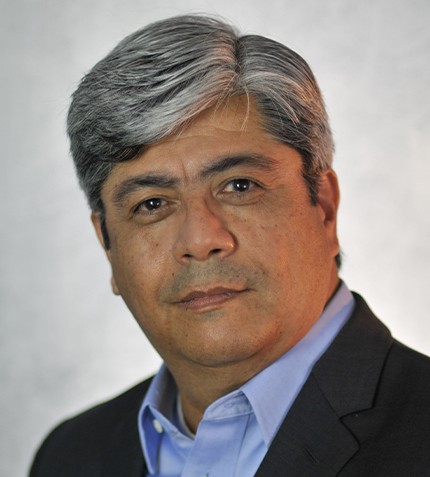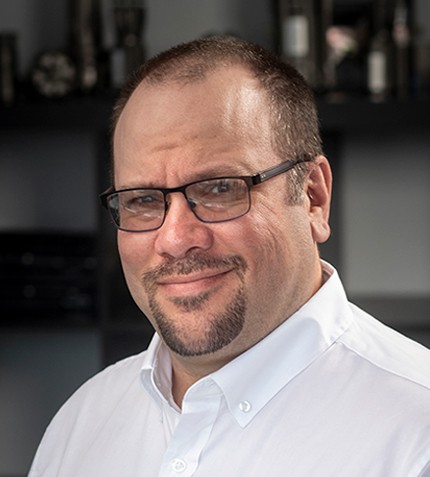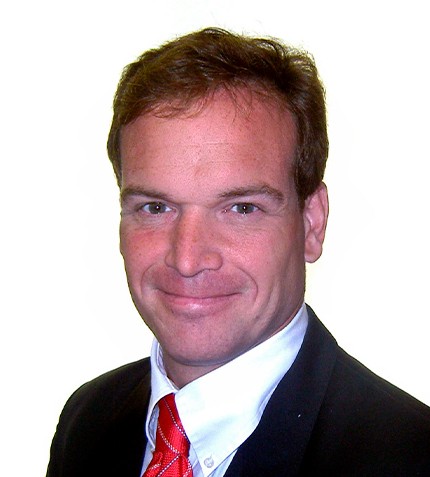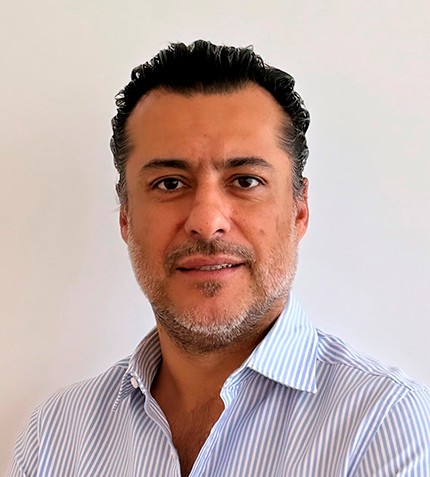
"Reconciliation reduces variability in feeding the mill, reducing the cost of water, energy, and reagents per tonnage. We also minimize the impact on communities by reducing dilution, as this lowers the tailings per ton of metal produced."
Claudio Toro
EXECUTIVE VICE PRESIDENT, MINESENSE TECHNOLOGIES
Can you discuss the benefits of the technological solutions MineSense Technologies offers?
ShovelSense provides a measurement of ore grade at the extraction point. We are the only company in the world offering this service, which provides customers with flexibility and the highest value. When screening and diverting occur downstream, the mining company has less flexibility and decision-making capacity, thus limiting the benefits of this technology. ShovelSense gives the operator the correct information to redirect the haul trucks at the beginning of the process.
The alternative is a block model with very low accuracy. That process requires the mine operators to drill holes, get samples, and send samples to the lab. The resulting ore grade will represent a block of 10x10x10 or larger, with no information about the ore grade between holes. Depending on the type of deposit, if the hole has significant heterogeneity, veins of potentially very rich metals will not be visible. As a result, copper and other metals are sent to waste. We grant the visibility that is otherwise lacking.
How does this ShovelSense work?
The minimum unit of measurement is a packet. We measure the ore grade packet to packet, load the trucks, and calculate the average ore grade per truck. If the ore grade in a truck is under the cut-off, we send it to waste. Otherwise, we send it to the processing plant. The benefits depend on the size of the mine and the type of metals we are recovering, but it can be 10-25% of trucks we re-road. This can translate to anywhere between 15 to 500 million dollars of yearly savings.
We are currently negotiating with a customer. Based on our calculations, our ShovelSense technology can create the equivalent of a new mine for this client – around 85,000 tonnes of metal a year – if ShovelSense is implemented in about 50% of the fleet. Minimal CapEx generates a very high level of benefits.
How does this technology improve conveyor belt systems?
We use the same sensors downstream on conveyor belts. After the primary crusher, the material moves on the conveyor belts. We typically deploy these sensors between the primary and secondary crushers, before the mill. In addition, we do mineral traceability and real-time online reconciliation. MineSense Technologies has had significant success in Copper Mountain, Canada, where we have a complete set of sensors from mine to mill. Reconciliation reduces variability in feeding the mill, thus reducing the cost of water, energy, and reagents per tonnage. We also minimize the impact on communities by reducing dilution, as this reduces the tailings per tonne of metal produced. These downstream benefits come from mixing ShovelSense with BeltSense.
Can you discuss the strategy behind your USD$42 million raise with JPMorgan?
JPMorgan invested in us for our technological ability to impact sustainability through improved efficiency. This money will allow us to expand. We are doubling the number of people this year, especially in this region of South America, the Middle East, Europe and Africa, and Asia-Pacific (specifically Indonesia).
MineSense Technologies will spend a significant portion of the raise on R&D. We are working on two additional sensors. Our vision has expanded to characterizing ore in the bucket. We will add sensors to measure hardness, for example, in conjunction with ore grade and measured particle size. We will be offering the option to mix different types of sensors depending on the needs of each mine.
How does your technology improve sustainability metrics?
We help customers get environmental approvals faster. Our technology helps reduce tailing, which is critical in its impact on communities and the environment. The next generation of technology will be geared toward selective mining. Selective mining means that open-pit surface mining will have to be more innovative. A mine will no longer consist of one big pit but of many smaller pits. Smaller pits require smaller trucks and smaller shovels, which will be efficient thanks to the data we can provide.
Can you provide us with an overview of your strategy and goals for the next year?
Our strategy is to get close to the customers, so we have decided not to grow in Vancouver anymore and to spend every penny near the customers in Chile. We will do the same in centers in Peru and Brazil, spending the money in the countries that produce copper.
Our vision is to cover the Americas, Europe, the Middle East, and Africa in the next three years. For example, today, we have 80% of the market share of the copper industry in Canada, which is not sustainable; few companies can go over 60%, so there is a high probability that as competition increases, our market share there will be lower. Therefore, by deploying in parallel, we plan to diversify by increasing our share to 60% in every single country in the next three years.










